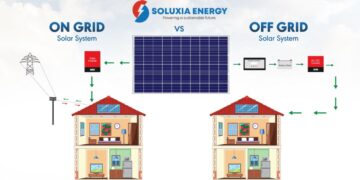Have you ever wondered how professionals identify hidden issues like moisture behind walls or overheated wires—without cutting into your home? The answer is thermographic inspection. This powerful, non-destructive method uses infrared technology to reveal problems that can’t be seen with the naked eye.
In this guide, we’ll walk you through how thermographic inspection work, what it involves, the tools used, and the reasons it’s so valuable for both homeowners and property buyers.
What Is a Thermographic Inspection?
A thermographic inspection, also called an infrared or thermal imaging inspection, uses a specialized camera to detect surface temperatures in your building. The camera produces images called thermograms that show temperature differences on walls, ceilings, floors, and equipment.
These differences often signal issues such as:
- Heat escaping through poorly insulated walls
- Cold air leaking in through windows or doors
- Moisture trapped behind drywall
- Overloaded electrical components
Understanding how thermographic inspection work helps you uncover potential problems early—before they become expensive to fix.
How Thermographic Inspection Work: The Basics
At the center of every thermal inspection is an infrared (IR) camera. Unlike regular cameras that capture visible light, infrared cameras detect heat. Everything emits heat—even cold surfaces—and the camera translates this into an image using a range of colors to represent temperatures.
Color Indications in Thermal Imaging:
- Hotter areas often appear red, yellow, or orange
- Cooler areas show up in shades of blue, purple, or green
These color shifts help inspectors pinpoint abnormal temperature readings that may signal a hidden issue—such as a damp spot in a wall, missing insulation, or overheating electrical wires.
When Is a Thermographic Inspection Needed?
Thermal imaging has many practical uses. Here are the most common reasons property owners and buyers schedule a thermographic inspection:
1. Energy Loss & Efficiency Checks
Thermal cameras can detect where your home is losing heat—helping you improve insulation and reduce your energy bills.
2. Home Buying Inspections
Before purchasing a home, a thermal scan can reveal issues not visible during a traditional inspection.
3. Moisture and Leak Detection
Trapped moisture behind walls or ceilings can lead to mold. Infrared imaging helps identify the presence of water without opening anything up.
4. Electrical System Assessments
Hot spots in electrical panels or wiring are signs of potential failure or fire hazards. Thermography helps locate them early.
5. Commercial Building Maintenance
Regular thermal scans help commercial property owners stay ahead of HVAC failures, electrical issues, and insulation inefficiencies.
A Step-by-Step Look at How Thermographic Inspection Work
Here’s how a typical thermographic inspection is carried out:
Step 1: Preparation
To ensure accurate readings, a temperature contrast between inside and outside is important—usually a difference of at least 15–20°F. This helps thermal anomalies show more clearly.
In some cases, a blower door test may be used to force air leaks to become visible during the inspection.
Step 2: Thermal Scanning
The inspector uses an infrared camera to scan various parts of the building, including:
- Walls and ceilings
- Attics and basements
- Doors and windows
- Electrical systems
- Heating and cooling ducts
- Plumbing systems
They move methodically through the space, capturing infrared images as they go.
Step 3: Image Analysis
The inspector examines the images for temperature patterns that don’t align with the surroundings. For example:
- A cold area near a ceiling may indicate poor attic insulation
- Warm spots on an outlet or panel could point to electrical overheating
- Cool areas near plumbing fixtures may suggest leaks or trapped moisture
These results help determine what further investigation—or repair—might be needed.
Step 4: The Inspection Report
After the thermal scan, the inspector provides a comprehensive report that includes:
- Annotated thermal images
- Notes on problem areas
- Recommendations for repair or further inspection
This report offers insight into the condition of your property, without invasive procedures.
Benefits of Thermographic Inspections
Once you understand how thermographic inspection work, the advantages become clear. Here are the key benefits:
✅ Non-Invasive and Damage-Free
No need to drill holes or remove walls. The entire process is surface-based and safe.
✅ Preventative Maintenance
Catch small problems before they escalate into major repairs.
✅ Increased Energy Efficiency
Identifying heat loss areas helps you reduce energy waste and lower utility costs.
✅ Early Moisture Detection
Spotting moisture early helps avoid mold growth and water damage.
✅ Enhanced Electrical Safety
Thermal imaging can reveal dangerously hot components that may cause fires if left unaddressed.
Limitations of Thermographic Inspections
While thermographic technology is powerful, there are a few things it cannot do:
- It doesn’t let you “see through” walls—it only shows surface temperature patterns
- It may not identify the exact cause of an issue—just that something is off
- The results can be influenced by weather, indoor/outdoor temperature differences, and equipment quality
- Proper interpretation requires experience and training
This is why it’s important to hire a certified and experienced inspector who understands how to interpret thermal data accurately.
Why Choose Protec for Your Thermographic Inspection?
At Protec Inspections, we offer expert thermal imaging services using top-tier infrared technology and certified professionals. We know how thermographic inspection work, and more importantly, how to translate findings into meaningful insights for you.
What we offer:
- High-quality thermal and visible-light images
- Easy-to-understand reports
- Clear recommendations for repair or maintenance
- Honest, dependable service every time
Whether you’re a homeowner, property investor, or building manager, Protec is your trusted partner in identifying hidden issues quickly and efficiently.
Final Thoughts
Now that you know how thermographic inspection work, it’s easy to see why they’re such a smart investment. From uncovering energy loss to spotting early signs of water damage or electrical hazards, thermal inspections help you make informed decisions—while avoiding costly surprises down the road.
Don’t wait until you see visible damage. Book your thermographic inspection with Protec today and get peace of mind knowing your home or building is in good condition—inside and out.



























